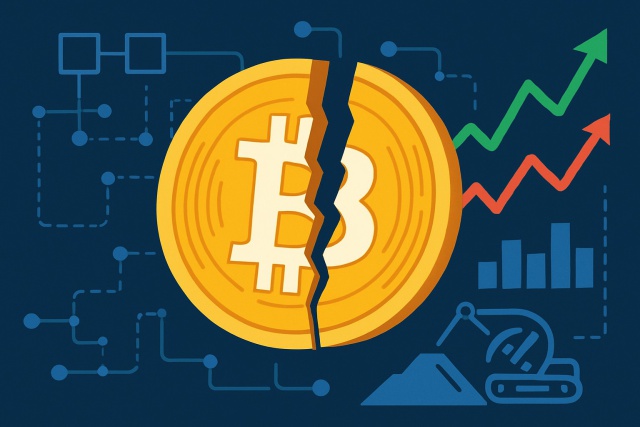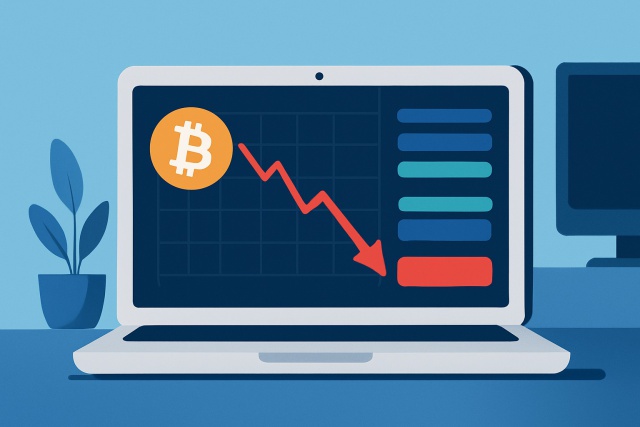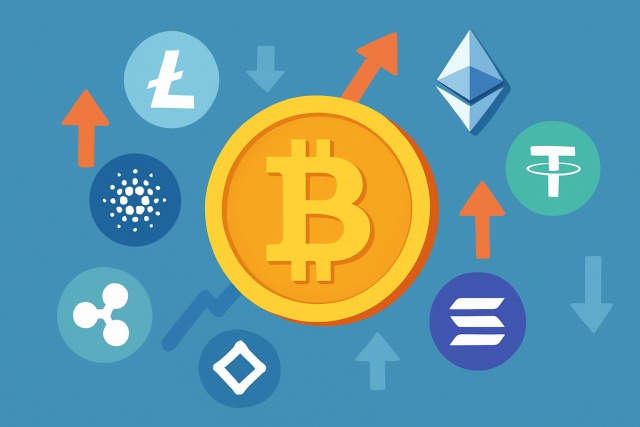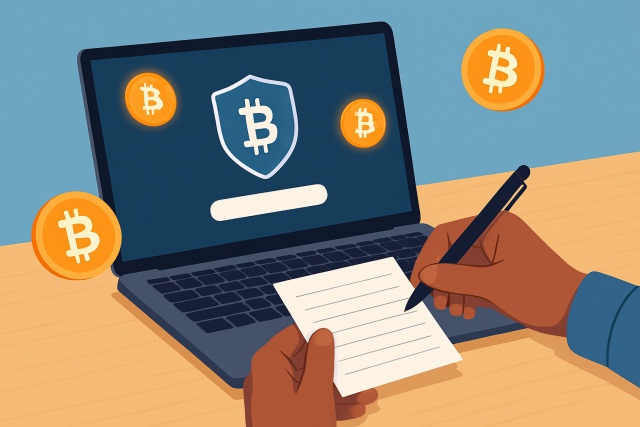Ordinals Explained and How They Change Bitcoin NFTs

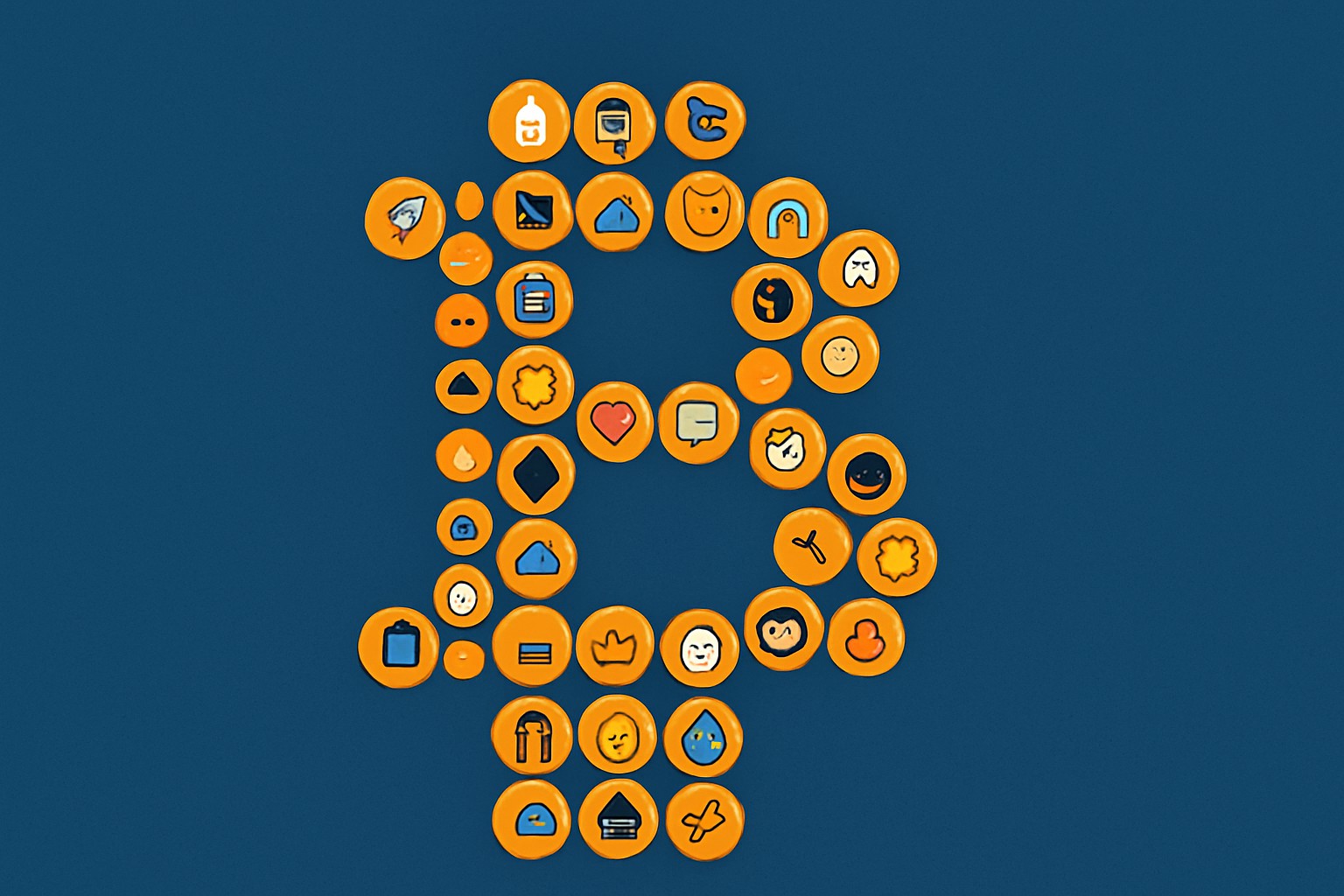
Bitcoin NFTs have long been tagged along with Ethereum or Solana in most conversations, but there’s a fresh twist in town called "ordinals" that’s shaking things up by allowing NFTs to live right on the Bitcoin blockchain. This article dives into what ordinals actually are, peels back the layers on how they work under the hood.
What Exactly Are Ordinals Anyway?
Ordinals open a fresh and fascinating way to attach almost any kind of data—images, text, or more—directly onto individual satoshis. These are the tiniest building blocks of Bitcoin. Picture each satoshi as a tiny digital canvas ready for you to "inscribe" your own unique piece of information.
- Ordinals are a clever protocol that numbers and tracks each satoshi giving it a unique identity within the Bitcoin universe.
- These numbered satoshis can carry inscribed data from plain text to multimedia files turning them into unique digital artifacts with personality.
- Unlike usual NFTs that rely on smart contracts ordinals embed data directly on-chain without needing new token protocols.
- Ordinals use Bitcoin’s existing features, especially the SegWit witness data making all this possible without changing Bitcoin’s core protocol.
How Exactly Do Ordinals Work on Bitcoin, Anyway?
Ordinals kick off by tagging each satoshi with its own unique ordinal number—like giving every tiny piece a little name tag. Data is inscribed onto these satoshis inside the witness section of a Bitcoin transaction, a clever feature brought to life by Segregated Witness. This data then sticks around for good, etched permanently into the blockchain as part of Bitcoin's transaction history.
Every satoshi created through Bitcoin mining gets its own unique ordinal number tied to exactly where it sits in the blockchain like a tiny fingerprint.
Data whether images or text gets cleverly encoded and slipped into the witness field of a Bitcoin transaction connecting it to a specific satoshi in a neat package.
Then just like any regular transaction it’s broadcast and confirmed on the Bitcoin network making sure it sticks around forever unchangeable and set in digital stone.
Specialized wallets or explorers can read and display these inscriptions by following the ordinals woven throughout the blockchain data.
It’s a common misconception that ordinals introduce a whole new token standard or somehow fork Bitcoin. They take a rather clever approach by using Bitcoin’s existing protocol features—like witness data—to embed NFTs right into the system.
Why Ordinals Might Just Shake Up Bitcoin NFTs
Ordinals bring truly on-chain NFTs to Bitcoin meaning the digital content is stored right on the blockchain instead of being linked off-chain. This permanent presence and Bitcoin's rock-solid security and decentralized setup represent important step forward for NFTs on what many argue is the world’s most secure blockchain.
- Ordinals let NFTs be fully owned right on-chain giving them a solid sense of permanence and cutting out the hassle of relying on external servers.
- The data etched into satoshis is set in stone—it can’t be altered and offers digital preservation as reliable as Bitcoin’s blockchain.
- Without a separate smart contract layer the whole NFT setup stays straightforward and much less of a headache on the technical side.
- Ordinals tap into Bitcoin’s massive security network making these inscriptions tough against tampering attempts.
- This opens the door to fresh possibilities for digital art, collectibles and plenty of other creative ventures directly on Bitcoin—a space that used to feel out of reach or off-limits.
How Ordinals Really Stack Up Against NFTs on Other Blockchains
Unlike Ethereum or Solana NFTs which usually lean on smart contracts to create and manage tokens, ordinals take a different route by storing data directly on Bitcoin satoshis—no contracts involved.
| Feature | Bitcoin Ordinals | Ethereum NFTs | Solana NFTs |
|---|---|---|---|
| On-chain permanence | Entire data is etched directly on-chain (witness data), no ifs or buts | Metadata usually hangs out off-chain; tokens live on-chain thanks to smart contracts | Metadata might be stored off-chain or on-chain via accounts, keeping things flexible |
| Smart contract complexity | No fancy smart contracts here; it sticks close to the Bitcoin protocol | Runs on fairly complex ERC-721/ERC-1155 contracts to keep tabs on tokens | Uses lightweight contracts that run alongside the main runtime, a bit like helpers in the background |
| Security model | Backed by Bitcoin’s battle-tested proof-of-work system that’s stood the test of time | Secured by Ethereum’s Proof-of-Stake network, which has its own seasoned vibe | Employs Proof-of-Stake with quick finality, though it’s still proving itself out there |
| Transaction costs | Usually higher fees; Bitcoin’s block size limits make their presence felt | Gas fees can be all over the place and sometimes spike unexpectedly | Generally low fees, designed for speed so you will not break the bank |
| Ecosystem maturity | Tooling and marketplaces are still finding their footing and growing | Well-established marketplaces with a robust developer crowd behind them | Expanding ecosystem, though not quite as mature or bustling as Ethereum just yet |
Ordinals on Bitcoin open up an exciting new frontier that promises impressive permanence and rock-solid security, even if the fees can be a bit steeper and the tools are still somewhat basic. Developers face their own unique hurdles thanks to data storage limits, but they also get to ride the wave of Bitcoin's famously robust decentralization.
A Friendly Guide to Creating, Buying, and Selling Ordinal NFTs
You’ll need a Bitcoin wallet that can keep an eye on ordinals and their inscriptions. Minting in this context means carving data onto a satoshi using some handy tools.
Pick and set up a Bitcoin wallet that’s friendly with ordinals—options like Xverse or Hiro Wallet usually do the trick.
Use an inscription tool or service to embed your data—whether it’s an image or some text—right onto a satoshi inside a Bitcoin transaction. It’s like leaving a tiny digital signature.
Once the transaction is confirmed on the blockchain, take a moment to check out your ordinal NFT using dedicated explorers so you can admire the metadata up close.
Trade those ordinal NFTs on niche marketplaces such as Gamma or Ordinals Market where these truly one-of-a-kind assets find their new homes.
Users should keep a close eye on Bitcoin transaction fees since they tend to creep up when the network gets busy. This can really impact the cost of inscriptions.
Possible Challenges and Criticisms of Ordinals, for Better or Worse
Ordinals have certainly stirred up quite the debate in the Bitcoin community, sparking concerns about everything from bigger block sizes and higher fees to the extra strain on node storage. Some purists worry that NFTs are pulling focus away from Bitcoin’s core identity as a digital currency.
- Packing large data into witness fields usually ends up bumping the average block size, which naturally pushes transaction fees higher.
- Nodes have to lug around more data, potentially making the hardware demands steeper and putting decentralization in a bit of a tight spot.
- Some Bitcoin purists see ordinals as a bit of a distraction, pulling attention away from Bitcoin’s bread-and-butter role as reliable sound money.
- The ecosystem is still pretty much in its infancy, with only a handful of wallets and marketplaces offering solid support so far.
- Whether ordinals will gain widespread acceptance or how they’ll be regulated is still up in the air and remains a lively topic of debate within the community.
"Ordinals unlock some pretty fresh avenues for creativity on Bitcoin, but it’s definitely wise to keep a keen eye on the network’s overall health while we’re at it. This experiment is quite the intriguing one, and in my experience, it’s set to play a major role in steering Bitcoin’s cultural vibe going forward." – A Bitcoin developer reflecting diverse community views
Exploring What Lies Ahead for Bitcoin NFTs with Ordinals A Look into the Future
The ordinals ecosystem seems poised for growth with ongoing development steadily chipping away at the hurdles to make it more user-friendly and rich with features. As more artists and collectors join developers on board, Bitcoin might blossom into a vibrant hub for digital creativity.
- More user-friendly wallets and marketplaces are popping up, making ordinal interactions a whole lot smoother and less of a headache.
- Digital artists and collectors are diving deeper, showing growing enthusiasm for Bitcoin-native NFTs in ways that really catch the eye.
- Ordinals might well team up with decentralized finance and blockchain gaming down the road, opening up some pretty exciting possibilities.
- The Bitcoin protocol could see thoughtful upgrades aimed at making inscriptions easier to handle and retrieve.
- The community keeps buzzing with lively discussions, playing a key role in shaping standards and best practices for ordinals as they evolve.
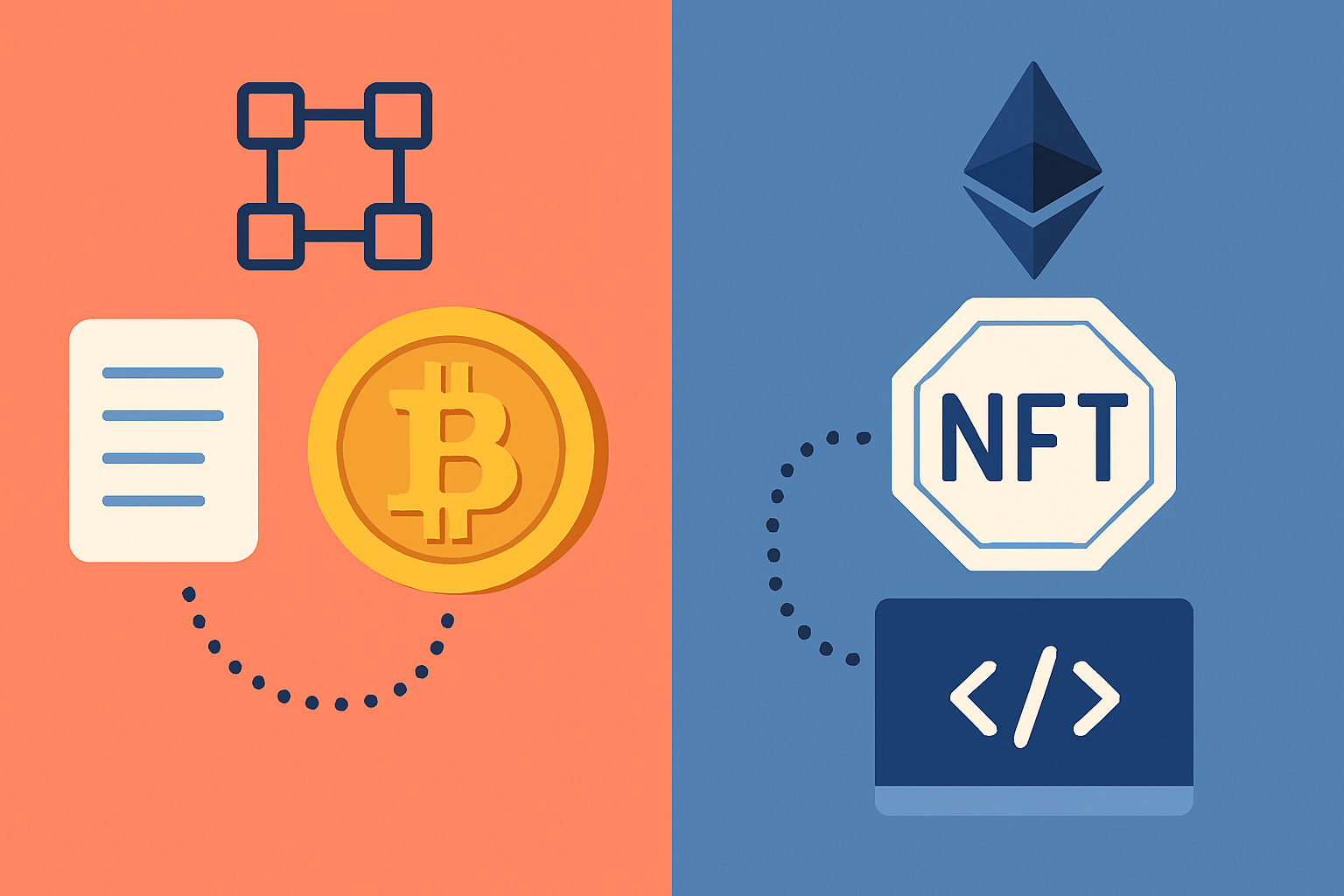
Frequently Asked Questions
Do I need a special wallet to hold an Ordinal NFT?
Yes, you’ll want a Bitcoin wallet designed to handle the Ordinals protocol. Wallets like Xverse, Hiro Wallet or Sparrow Wallet fit the bill. These are not your typical Bitcoin wallets because they can track and display unique satoshis carrying inscribed data, something standard wallets can’t do.
How are Ordinals different from Ethereum NFTs?
The main difference is how the data is stored. Ethereum NFTs usually rely on smart contracts that point to data stored elsewhere. Ordinals embed the data, such as an image, directly onto a satoshi on the Bitcoin blockchain. This means they are truly on-chain and permanent without an extra smart contract layer.
Is creating an Ordinal expensive?
Costs can vary quite a bit. The biggest part of the cost comes from Bitcoin network transaction fees which fluctuate depending on network activity. Larger files like high-res images take up more block space so their fees tend to be higher. In general, minting an Ordinal is usually more expensive than on other blockchains, especially when the network is busy.
Why are some people in the Bitcoin community critical of Ordinals?
Some argue that adding large data files to the blockchain increases its size and storage demands on nodes, which could affect decentralization. There are also purists who believe this goes against Bitcoin’s original purpose as peer-to-peer electronic cash. Additionally, they worry this could push transaction fees higher and make everyday use less affordable.
Where can I buy or sell an Ordinal NFT?
You can buy or sell Ordinals on specialized marketplaces like Gamma.io, Ordinals Market and Magic Eden. These platforms handle the unique aspects of Bitcoin-based inscriptions. They let you easily connect your Ordinal-compatible wallet to list items, browse offerings and make purchases without hassle.
Start Your Crypto Journey with Coinbase Today
Ready to enter the cryptocurrency market but unsure where to begin? Coinbase makes buying, selling, and storing digital assets simple and secure for beginners and experts alike.




